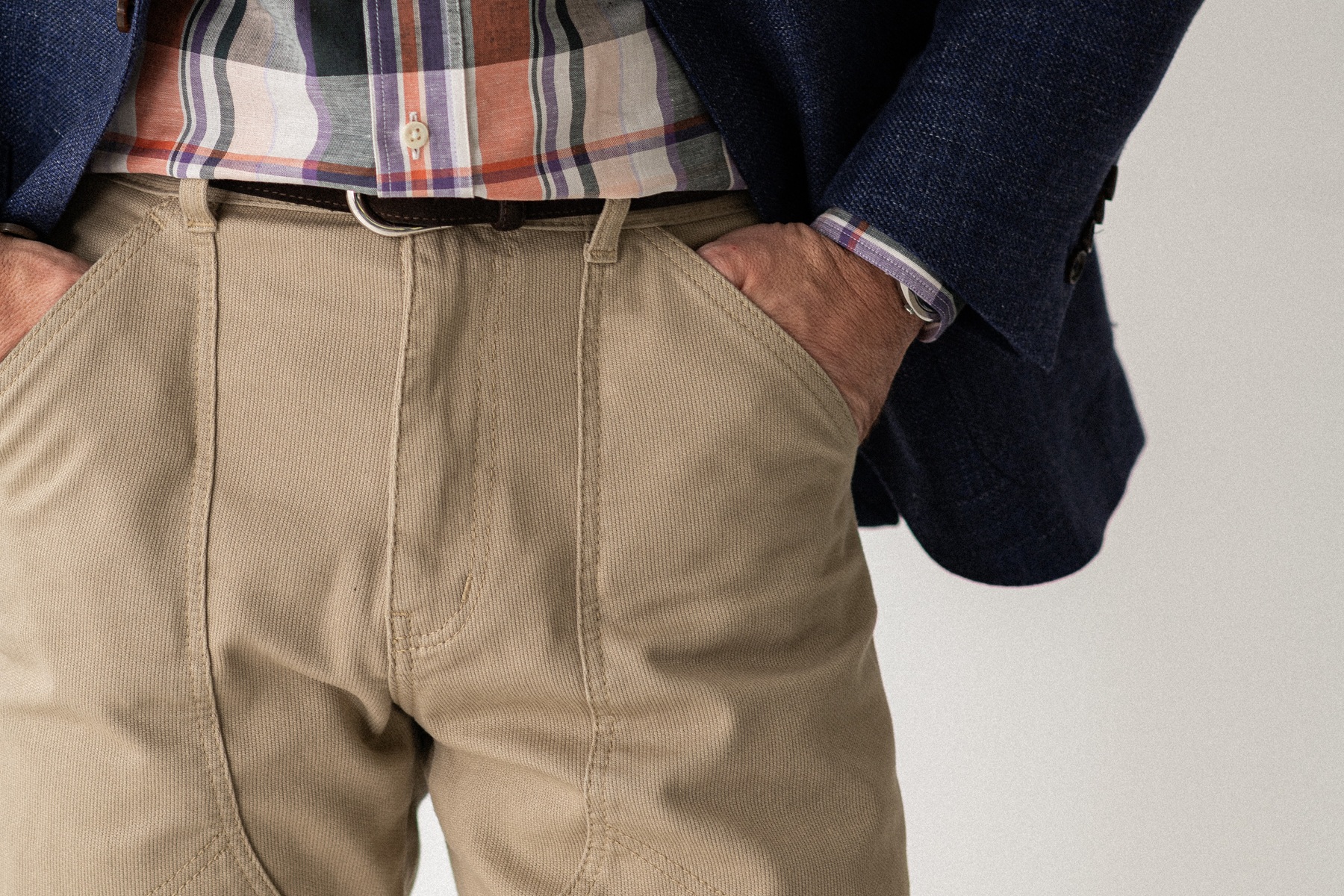A Workwear Kind of Classic: Carpenter Pants

We have a soft spot for this cut – while certainly more casual than what we typically showcase, carpenter pants are, for us, a relaxed alternative to chinos and jeans. It’s worth taking a moment to explore their origins… and their modern – sometimes even surprising – role.
It all started with jeans.
We’ll spare you the full history of this pop culture icon – that’s a rabbit hole we could disappear into forever – but it’s worth remembering that jeans, though often seen as fashion staples today, were originally created as workwear, designed for the toughest of tasks. First, they were worn by miners, gold diggers, and farmers; later came the Wild West aesthetics and cowboy lore.
But, what’s important for today’s subject, over their 150-year history of a rise to the legend status – whether that feels like only or already a century and a half is up to you – they’ve given rise to countless spin-off cuts, some of which went on to forge their own independent paths



The design elements were clearly practical far beyond one specific trade. The same features that made jeans functional – double (and triple) stitching, durable cotton, spacious pockets – were kept, with new details added: reinforced knees (double front), convenient side pockets, and a distinctive hammer loop, all added with working utility in mind.
Not all of those features have stood the test of time – the hammer loop, for instance, was already questioned about its sense decades ago (and today is mostly the subject of memes about wine glasses hanging in there) - but the core of the design has endured. A looser leg, a higher rise, more room in the right places – that’s the comfort that appeals not just to people constantly crouching and kneeling at work, but to anyone who values everyday wearability.

Carpenter pants came along a little later than jeans and entered mainstream fashion a little later, too – not in the ’50s or ’60s, but in the ’80s and ’90s. By then, rock’n’roll had given way to hip-hop and grunge as the new countercultures – and once again, it was the outsiders who embraced these trousers first. Fashion followed, then designers, then mainstream - and eventually they joined the everyday wardrobe canon for good.
Once upon a time, they were more specialized than jeans. Then, they were more rebellious than jeans. And now? Now they’re more distinctive than jeans – more directional, more detailed. They are their workwear equivalent, perfect for when you want to take your look a bit more in that direction, or useful as simply a refreshing everyday alternative that looks (and feels) a bit different.
It’s all about the details – and menswear, especially the classic menswear we’re drawn to, thrives on precisely those. Particularly when they’re practical!

Take hunting jackets, for instance - we no longer wear them for actual hunting, but those hand-warmer pockets are still perfect for chilly urban walks. Raglan sleeves may have once helped wield sabres more easily – now, they make reaching for a subway handle more comfortable. Likewise, no one’s tucking a hammer or folding ruler into their side pocket anymore – but that spot turns out to be perfect for sunglasses or a pen.
Half joking, half serious – we’ve found they’re also ideal for tailors. That side pocket is just right for a measuring tape (rather than scissors, despite the photo!), and reinforced knees help with all the kneeling down for fittings – a very real, very specific occupational hazard.
More realistically – many of us will discover that extra layer of fabric under the knee comes in handy during playtime on the floor with kids!


It’s exactly that kind of everyday practicality we had in mind when designing our version of these trousers for modern life. Not necessarily minimalist, but definitely striking a balance between form and function.
The double panel extends all the way to the waistband – which let us integrate deep, roomy front pockets while keeping the silhouette smooth. No hammer loop – just a useful extra pocket on the right-hand side. Belt loops are sized for standard belts, just like jeans. Instead of rivets, we used discreet bar tacks to reinforce key stress points.


That same philosophy guided our fabric choice – we went with Bedford cord, a tightly woven cotton with a micro-cord texture (a bit like corduroy, but without the raised nap). Its durability nowadays is best measured not in how it resists damage, but in how well it ages. At 10 oz, it’s lighter than our denim – so it stays breathable and comfortable, even in spring and summer.
The color? A cool beige – a shade that blends seamlessly into the workwear palette (think olive, denim, brown, off-white), but also acts as a neutral base for bolder combos. Even ones with sportcoats, as we’re not afraid to recommend these as a jeans or chino alternative – they often work just as well!

After all, it’s “workwear of the past, for the labour of today” – as we like to describe our Working Class series, inspired by vintage utility clothing, but made up to modern standards and needs of a different lifestyle. This other kind of classics, as I like to call it – the classics of workwear – has long since proved their versatility outside the primary context and earned its place in modern wardrobes, including the Poszetka range, too.
Military jackets, overshirts, jeans… and now, it’s the carpenter pants.